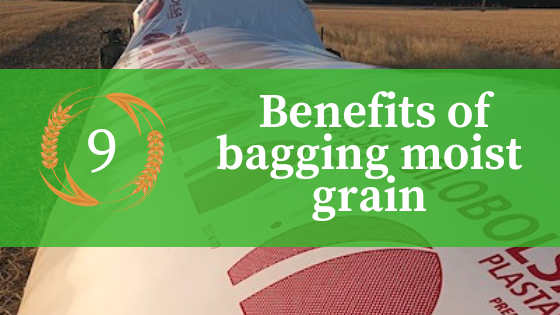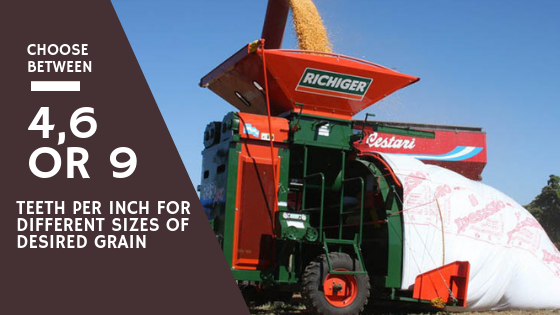|
By now, most farmers have heard of the concept of bagging grain- it provides an easy extra storage option because you can bag directly in your field and keep your combines running. But most of the grain bagging we talk about is grain that has up to 14% moisture and will eventually be sold. What about grain that will have higher moisture and be used for livestock feed? This would be considered high moisture grain, and it will take a special machine (ie. A crimper/bagger) to achieve this. Here are 9 reasons you would want to bag high moisture grain for use in feeding livestock:
4. Grain attains its highest nutrient level, dry matter yield and palatability and ease of assimilation after fermentation progresses to its last stage at these high moisture levels in an acidic environment, in about a months time. The product remains virtually unaltered as long as the grain feed is not exposed to air. 5. Crimped grain has been traditionally processed in pits lined with plastic, but bagging has the enormous advantage of automatically providing the compression and the anaerobic atmosphere required, as well as a steady processing pace. Once crimped and ensiled, grain undergoes lactic fermentation in the absence of oxygen. No further processing is required afterward, saving on time and handling. 6. Energy use and costs diminish as grain does not have to be dried. Crimped grain is dust free, healthier for workers and stock. 7. Crops are harvested on average 3 weeks before conventional dates, at the time of their peak nutritional value. And at an earlier state than when fungal diseases emerge. 8. Earlier harvest allows easier programming of combine use and timelier establishment of following crops for improved land management. Field grain losses diminish when combining ahead of time. 9. Crimped grains are ideal concentrate feed for ruminant livestock ranging from calves and lambs to dairy cows, beef cattle and adult sheep. The inclusion of crimped feed in livestock rations results in better rumen stability and conversion efficiently. Non ruminants can also benefit from this high concentrate grain feed. “ Field losses at harvest may be reduced by 5 to 10 percent. Losses average about 13 percent for 15% moisture grain vs 2 percent for 26% moisture grain.” ( from department of animal sciences of the University of Missouri, in reference to corn and milo harvested early as high grain feed for beef cattle.) Information gained from Richiger R950MX brochure, 2017. Comments are closed.
|


 RSS Feed
RSS Feed